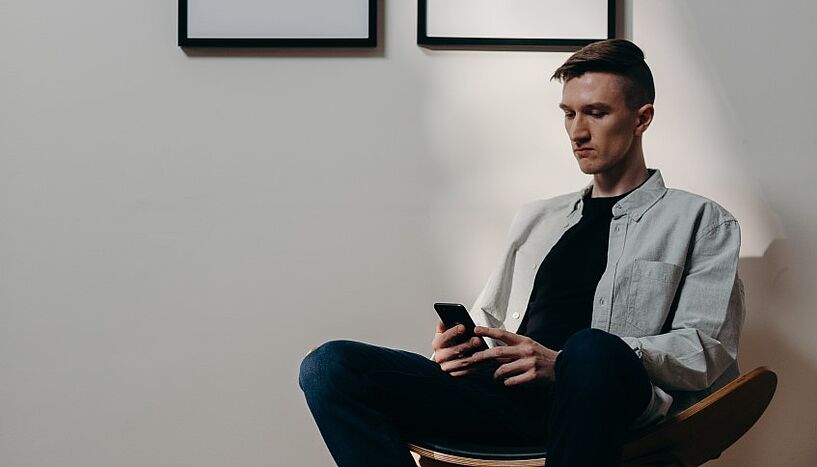Online art viewing can improve well-being
08. July 2022
© Pexels cottonbro
Effects are similar to those of visits to physical art galleries or even nature experiences
Viewing art while visiting galleries and museums can have powerful effects on an individual's mood, stress and well-being. But does the same hold true for viewing art in digital space? A new study by psychologists led by MacKenzie Trupp, and Matthew Pelowski investigated whether engaging with art online also has this effect. Their conclusion: a short three-minute visit to an online art or cultural exhibition also shows significant positive effects on subjective well-being.
In the first wave of the Covid 19 pandemic, arts and cultural institutions quickly shifted from stationary buildings to the Internet. For the first time, digital museums and online art galleries became the focus of public attention. This had two effects: First, art and cultural objects could be accessed from the sofas of citizens around the globe. Second, art had the opportunity to reach a much wider audience than before.
Over the past decade, scholars have conducted numerous research studies demonstrating that art can have a positive impact on health and well-being. However, it was unknown whether these effects could also be felt over the Internet.
In a new study, MacKenzie Trupp, PhD, Matthew Pelowski of the Arts and Research on Transformation of Individuals and Society research group, and their colleagues from the Department of Psychology and the Max Planck Institute for Psycholinguistics asked participants to visit art exhibitions accessible via smartphones, tablets, and computers. Before and after the visit, psychological state and well-being were measured to determine the extent to which viewing the art might be beneficial.
Results showed that even very brief viewings can have significant effects, leading to lower negative mood, anxiety, and loneliness, as well as higher subjective well-being. These results were comparable to other interventions such as nature experiences and visits to physical art galleries. Upon further investigation, the personal subjective experiences of individuals became an important aspect to consider. The research team discovered that the more meaningful or beautiful people found the art to be and the more positive feelings they had while viewing it, the greater the benefit.
These results demonstrate that brief online art viewing can improve and support well-being. In addition, this study emphasizes art interventions-a recommendation that can be implemented on-site or made specific to individual viewers. This opens new avenues for further research and applications in spaces such as waiting rooms, hospitals, and rural areas where access to art is limited.
Publication:
Trupp MD, Bignardi G, Chana K, Specker E and Pelowski M (2022)
Can a Brief Interaction With Online, Digital Art Improve Wellbeing?: A Comparative Study of the Impact of Online Art and Culture Presentations on Mood, State-Anxiety, Subjective Wellbeing, and Loneliness. Front. Psychol. 13:782033.
Scientific contact
BA MSc MacKenzie Trupp
Department of Cognition, Emotion, and Methods in Psychology1010 - Wien, Renngasse 6-8
+43-1-4277-47111
mac.trupp@univie.ac.at
Further inquiry
Mag. Alexandra Frey
Media Relations ManagerUniversität Wien
1010 - Wien, Universitätsring 1
+43-1-4277-17533
+43-664-8175675
alexandra.frey@univie.ac.at
